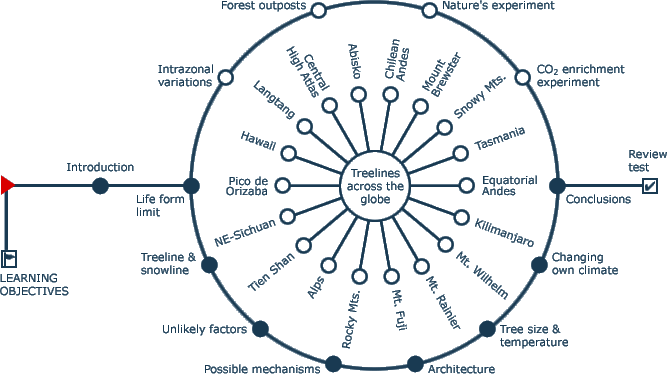The lower boundary of the alpine life zone, the upper limit of forest fragments, is commonly termed the treeline. Often the transition from closed montane forest to the treeless alpine is not a line, but a gradient, hence, the more adequate term is "treeline ecotone". This lecture explains the biological, i.e. the physiological and life-form related, causes of this most prominent vegetation boundary. Examples from various parts of the world will highlight both the global commonness and local peculiarities of this phenomenon. It will be demonstrated that the natural, climatic, high elevation treeline is largely a consequence of morphology (the life form "tree") and its bioclimatological implications. Developmental constraints rather than a shortage of photoassimilates or stress in the classical sense are the immediate causes. A central theme will be the differentiation between local phenomena and global patterns. |

